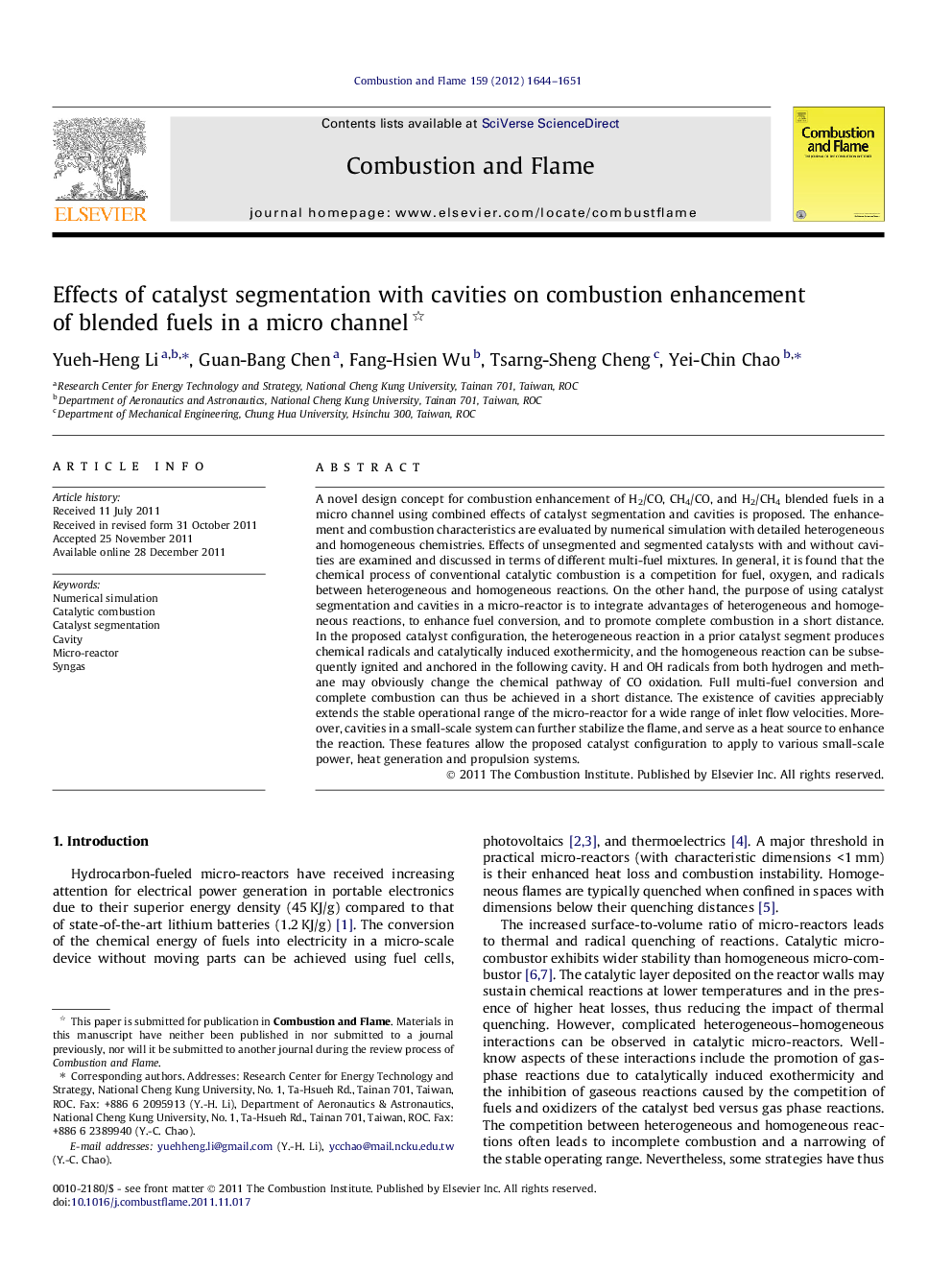| کد مقاله | کد نشریه | سال انتشار | مقاله انگلیسی | نسخه تمام متن |
|---|---|---|---|---|
| 166547 | 457785 | 2012 | 8 صفحه PDF | دانلود رایگان |

A novel design concept for combustion enhancement of H2/CO, CH4/CO, and H2/CH4 blended fuels in a micro channel using combined effects of catalyst segmentation and cavities is proposed. The enhancement and combustion characteristics are evaluated by numerical simulation with detailed heterogeneous and homogeneous chemistries. Effects of unsegmented and segmented catalysts with and without cavities are examined and discussed in terms of different multi-fuel mixtures. In general, it is found that the chemical process of conventional catalytic combustion is a competition for fuel, oxygen, and radicals between heterogeneous and homogeneous reactions. On the other hand, the purpose of using catalyst segmentation and cavities in a micro-reactor is to integrate advantages of heterogeneous and homogeneous reactions, to enhance fuel conversion, and to promote complete combustion in a short distance. In the proposed catalyst configuration, the heterogeneous reaction in a prior catalyst segment produces chemical radicals and catalytically induced exothermicity, and the homogeneous reaction can be subsequently ignited and anchored in the following cavity. H and OH radicals from both hydrogen and methane may obviously change the chemical pathway of CO oxidation. Full multi-fuel conversion and complete combustion can thus be achieved in a short distance. The existence of cavities appreciably extends the stable operational range of the micro-reactor for a wide range of inlet flow velocities. Moreover, cavities in a small-scale system can further stabilize the flame, and serve as a heat source to enhance the reaction. These features allow the proposed catalyst configuration to apply to various small-scale power, heat generation and propulsion systems.
Journal: Combustion and Flame - Volume 159, Issue 4, April 2012, Pages 1644–1651